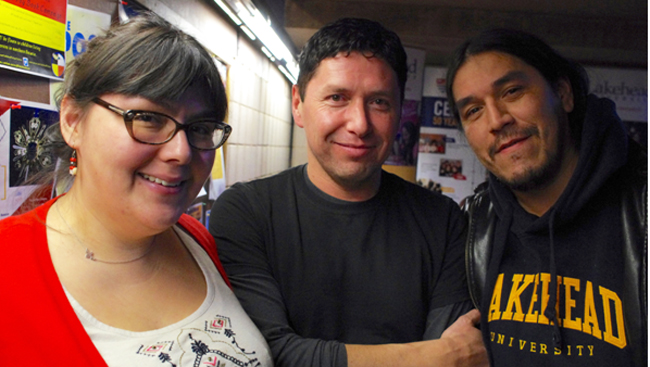Lakehead students discovering their history

By Rick Garrick
Pic Mobert’s Melissa Twance discovered many treaties were signed with pictographs during her masters of education research project on pictographs as a form of Indigenous knowledge.
“A long time ago the Anishinabe didn’t have a writing system so they signed the treaties with pictographs,” says Twance, a Lakehead University masters student. “And a lot of times these pictographs represent their clans. So rather than an individual identity, its actually signing a treaty on behalf of their kin.”
Twance says the pictograph signatures provide a deeper understanding of the Anishinabe people’s identity as a nation.
“A lot of time people just think Anishinabe people and the British signed treaties when it was way more than that,” Twance says. “It was this clan and this clan and this clan came together to sign this treaty with the British. So it’s a lot more complex than we’re led to believe.”
Twance discovered the information about pictograph signatures in an anthropology journal while searching for information on the clan systems.
“Because I’m in education, I want to give our people a piece of their history that they can look at and use to shape our understanding of where we can go in the future,” Twance says. Twance has also been searching out the location of pictograph sites across northern Ontario, noting she recently revisited the Agawa Bay site in Lake Superior Provincial Park.
“We need to be accessing these sites; we need to be aware of them because there is a lot of (information) we can still learn from them,” Twance says. “We can learn about how our people moved around on the landscape, what stories we felt were important to be recorded on these rocks and what those stories can tell us.”
Twance was one of many Lakehead University students, professors, staff and visitors who attended the Office of Aboriginal Initiatives Holiday Open House, held Dec. 2 in the University Centre.
Rocky Bay’s Stan Legarde, another Lakehead University masters student, is researching social capital, native ethics and rules of behaviour for his masters of sociology research paper. He has found that First Nation networks are linked together on three levels, including bonding, with families; and inter-community, with other native or non-native communities.
“And then the linking portion of social capital links us to our bands, the band offices themselves to government, the federal government, perhaps even the Indian Act,” Legarde says. “I’m just trying to find out where ethics such as non-interference influences or does not influence establishing healthy relationships on these three levels of social capital.”
Legarde says his research includes looking at information and communications technologies as a form of social capital.
“This is on a northern Ontario level, but I can see this having implications in the Far North as well,” Legarde says. “It might even have further implications for international relations in the Arctic.”
Red Rock Indian Band’s Sean Steven, a Lakehead University Native Access student and artist, is looking to send an urban Indian message out to the world through his art.
“I’m a painter, I’m a photographer, anything to do with the arts I enjoy,” Steven says. “I’m not a realist, but I like realism also.”
Steven says his work is abstract and “very spontaneous.”
“When the rest of the world is worried about who did what to who, I’m more concerned with what is around me, like in nature mostly,” Steven says. “I like what’s in the moment. Why did that bird fly that way or the angle of a tree with the sunlight hitting on it. When I capture that on my camera phone — that’s all I have — it comes out totally different than what I expected. And a lot of people seem to enjoy that.”


